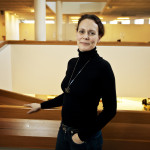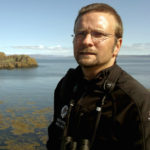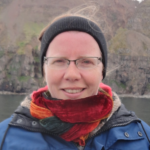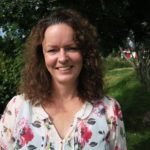Research
09/10/2014University of Iceland is a leading research institution in Iceland. Several research institutes and centres within the University focus on Arctic research.
The University employs a large number of highly qualified academics who are a part of a strong global network within the scientific community. Academics from diverse disciplines within the University of Iceland focus on Arctic research.
Arctic researchers
 Anna Karlsdóttir
Anna Karlsdóttir
Assistant Professor, Faculty of Life and Environmental Sciences and Senior Research Fellow, Nordregio, Nordic Centre for Spatial Development
annakar@hi.is, anna.karlsdottir@nordregio.se
Research Focus: Regional development and Tourism in the Arctic
Specialized in coastal areas, rural and urban, Arctic, international affairs, societal and occupational changes across sectors such as tourism, primary industries (fisheries and agriculture), mega industries and creative industries. Interested in gender, youth, labor market, cultural and mobility aspects of geography, planning and spatial development.
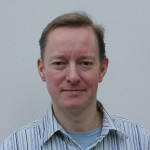 Arnar Pálsson
Arnar Pálsson
Associate Professor in Bioinformatics, Faculty of Life and Environmental Sciences
apalsson@hi.is
Research Focus: Parallel evolution, adaptation, population genetics, regulatory evolution, speciation
The work focuses on Arctic charr, a cold tolerant and highly polymorphic salmonid species. Studies in Iceland have documented extensive variation between populations, in terms of form, size and lifehistory, which reflects both history of the fishes and adaptation to new habitats. These fish populations are being affected by global climate changes and land use, and future changes in temperature in particular are anticipated to affect them very strongly. The studies focus on identifying the genetic factors relating to diversity of Arctic charr in Icelandic lakes, but also the population history and diversity among anadromous charr.
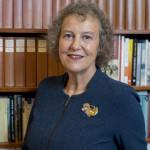 Auður Hauksdóttir
Auður Hauksdóttir
Professor of Danish, Faculty of Languages and Cultures and Director, The Vigdís Finnbogadóttir Institute of Foreign Languages
auhau@hi.is
Research Focus: Danish language and culture in Iceland in past and present. Danish as a foreign language in Iceland and in the neighbouring countries.
Auður Hauksdóttir has conducted research on the role and the position of the Danish language in Iceland in past and present, and of Danish as a foreign language in Icelandic schools. She has also conducted comparative research on the role of the Danish language and culture in Iceland compared to their roles in the Faroe Islands and in Greenland, respectively. She has developed, in cooperation with Danish, Icelandic, Faroese and Greenlandic linguists, computer based teaching and learning materials in Danish as a foreign language. The learning material is intended for use in Faroese, Icelandic and Greenlandic schools and has been developed in cooperation with Danish teachers and their students in the three countries, see Taleboblen. The language tool is intended to facilitate the acquisition of Danish as a spoken language, in particular Danish pronunciation, as well as the acquisition of vocabulary in context / communicative situations /, in particular phrases and expressions. Taleboblen contains, in addition to oral exercises, around 1000 frequently used Danish phrases and collocations and their corresponding (if existing) expressions in Faroese, Greenlandic and Icelandic. The language tool gives the students an opportunity to express themselves in Danish, to hear themselves speak and, to a certain extent, to receive feed-back on their pronunciation.
The research network members are currently involved in a new project which, as Taleboblen, revolves around computer assisted language learning. The new project is an innovative tool and takes the form of a computer game based on interactive role play developed for learning Danish. A part of the project involves research in didactics in teaching Danish in the West Nordic area.
 Árný Sveinbjörnsdóttir
Árný Sveinbjörnsdóttir
Research Scientist, Institute of Earth Sciences
arny@hi.is
Research Focus: atmospheric hydrological cycle, water vapor, water isotopes, climate variability, ice cores
A. Measurements and interpretation of water stable isotopes in Greenland ice-cores as they give excellent estimate of the atmospheric temperature at the time the snow fell on the surface of the ice sheet. The isotope records have given unprecedented insights into north polar temperature variability during the last ca. 140.000 yrs.
B. Arctic atmospheric warming and sea ice retreat will cause significant changes in the Arctic atmospheric hydrological cycle. The stable water isotope composition in the evaporated water vapor carries a fingerprint of the source region condition. This can be used to track the origin of the water vapor in the atmosphere and separate local and remote contributions. Stable water isotope observations can therefore be used to benchmark the treatment of moisture in atmospheric general circulation models. It is therefore of immense importance that we understand the processes of the atmospheric hydrological cycles not only to facilitate accurate simulations of future climate but also to improve interpretation of the ice core records. This will be done by comparing observations of water vapor isotopes measured on the south coast of Iceland with similar observations in Bermuda, Greenland, Svalbard, as well as two ship-based observation campaigns.
International cooperation on Greenland deep drilling with University of Copenhagen, Denmark, Laboratoire des Sciences du Climat et de l’Environment, France, INSTAAR, University of Colorado, Boulder, USA. International cooperation on continuous collection and measurements of stable isotopes in atmospheric water vapor with Laboratoire des Sciences du Climat et de l’Environment, France, University of Copenhagen, Denmark, and Alfred Wegener Institute, Germany.
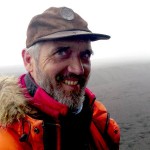 Ármann Höskuldsson
Ármann Höskuldsson
Research Professor, Institute of Earth Sciences
armh@hi.is
Research Focus: Volcanism in the Arctic, Arctic Oceanic ridges, Arctic plate boundaries, Volcanic history of the North Atlantic, Volcanic processes in the Arctic, Ice volcano interaction.
Volcanoes in the Arctic are in many ways more hazardous than volcanoes at lower latitudes since the stratosphere is lower. Thus effects of large eruptions in the Arctic are more likely to affect the whole of the Northern hemisphere. Dr. Hoskuldsson is specialised in physical volcanology and hazard assessment of eruptions. He has been working in Iceland and Jan Mayen to better understand the way Arctic volcanoes work. Dr. Hoskuldsson has also been leading research on the Reykjanes ridge plate boundary, along with scientists from Hawaii. Understanding of the volcanism in the Arctic Atlantic region cannot been addressed without investigating the interactions between the two major players, the active plate boundary and the North Atlantic hot spot. It is important to follow active eruptions to better understand hazards posed by the volcanoes, further understanding ongoing eruptions helps to understand past eruptions and there effect on the Arctic environment. Thus an important factor in Dr. Hoskuldssons research past, present and future eruption in the North Atlantic.
Hoskuldsson is participant in several international collaborative research efforts. To name few, VeTools an interactive way to mitigate volcanic hazard, sponsored by the European Union, FutureVolc a major effort to modernise observation and mitigation of imminent and ongoing volcanic events, sponsored by the European Union. Reykjanes Ridge reorganisation, a detailed mapping project of the Reykjanes Ridge to better understand the North Atlantic plate boundary, sponsored by NSF, USA.
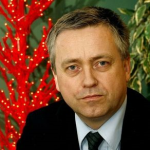 Björn Karlsson
Björn Karlsson
Associate Professor, Faculty of Civil and Environmental Engineering
bjorn@mvs.is
Research Focus: Risk analysis, risk assessment, risk management, rescue capacity, Arctic.
The Faculty of Civil and Environmental Engineering has over the last decade worked on research projects to do with risk and crisis management, under the leadership of Ass. Prof. Björn Karlsson. The faculty has taken part in European research projects with the aim of developing contingency plans, preparedness strategies and emergency response mechanisms as a result of various hazards, including disruption in power supply/internet. The faculty has cooperated with several other Nordic and Baltic actors and takes part in ongoing EU projects in this area. The aim has been to use risk management methodologies to plan response to various hazards and to mitigate such risk. The faculty has had a very close cooperation with the Iceland Construction Authority (ICA), where Dr. Björn Karlsson serves as Director General. The ICA is responsible for matters to do with fire safety, electrical safety and building regulations in Iceland. The ICA is also responsible for conducting risk assessments to do with various different hazards that may occur and preparation of plans for rescue response. The ICA has close cooperation with other the Civil Protection Authorities in the Nordic and Baltic countries. Dr. Björn Karlsson was one of the project leaders of the project PRETEAR, a EU funded project within the call „Preparedness and prevention projects in civil protection and marine pollution”. He is a part of the NORDRESS project, funded by the Nordic Council of Ministers. Dr. Björn Karlsson is an Icelandic representative at the Nordic meetings of Civil Protection Authorities and takes regularly part in European meetings of Civil Protection Authorities.
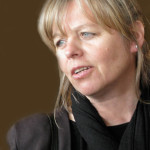 Bryndís Snæbjörnsdóttir
Bryndís Snæbjörnsdóttir
bryndis@btinternet.com
Guest Lecturer in Art History and Theory at Faculty of Icelandic and Comparative Cultural Studies & Visiting Professor Malmö Art Academy & Visiting Professor at the Icelandic Academy of the Arts.
Research Focus: Ecology, sustainability, human and animal relations, relational art, socially engaged art.
My artistic research is conducted in collaboration with my partner Dr. Mark Wilson (Associate Professor, University of Cumbria). In our research we use human and animal relations to explore different emphases in our attitudes and understandings of the environment. Our works are often in co-operation with other specialists in the humanities and the sciences. Environmental matters of the North have formed much of our research and over the last 13 years we have travelled for residencies in Greenland, Svalbard and north of Norway for our work. In 2006 a long research project was completed when our book nanoq: flat out and bluesome: A Cultural Life of Polar Bears was published. The project involved 5 years of research on taxidermic polar bears in the United Kingdom and it explored amongst other things how British colonialism influenced changes in our knowledge of and approach to this symbol of the north. Furthermore it became evident through our research and project that even in the last few years, paradoxically, the contemporary symbolic value of the animal has changed and depleted prior to the animal itself becoming extinct. In the last couple of years we have been exploring polar bear dens, their interior form and ergonomics, with a view to creating an installation that will enable the public to approach some essence of these animals without reiterating its bodily image. In our art works we put emphasis on engaging with the personal memoris, experience and knowledge of the audience so the strategy of oblique reference is often far more potent.
Brynhildur Davíðsdóttir
Professor in Environment and Natural Resources, Faculty of Economics and Faculty of Life and Environmental Sciences
bdavids@hi.is
Research Focus: Energy transitions, climate change mitigation and adaptation, ecosystem services, sustainability assessments, sustainability indicators, renewable energy
Dr. Davíðsdóttir has extensive teaching, research and consulting experience in interdisciplinary issues as they relate to environmental and energy analysis, such as environmental and energy policy and management, ecosystem services, sustainable energy development, sustainability indicators, climate change mitigation and adaptation and modeling energy related technological transitions. Currently Dr. Davíðsdóttir is involved in i) three Nordic centers of excellence; ARCPATH which combines improved regional climate predictions with enhanced understanding of environmental, societal, and economic interactions in order to supply new knowledge on Arctic “pathways to action”, NORD-STAR which focuses on adaptation and mitigation for the Nordic countries with a particular emphasis on energy systems and GreenMAR that focuses on blue growth; ii) one Icelandic center of Excellence (GEORG) that focuses on geothermal developments in addition to iii) Nordic Energy Technology Perspectives, a project funded by the International Energy Agency and Nordic Energy Research that focuses on transitions to low-carbon Nordic Societies. This is in addition to numerous other smaller research projects focussed on various sustainability issues, valuing ecosystem services, energy transitions and climate change mitigation and adaptation.
 Gísli Már Gíslason
Gísli Már Gíslason
Professor in Limnology, Faculty of Life and Environmental Sciences
gmg@hi.is
Research Focus: Icelandic River Ecosystems, Arctic and Alpine Stream Ecosystems, Evaluating the Impacts of Global Change on European Freshwater Ecosystems
 Gísli Pálsson
Gísli Pálsson
Professor of Anthropology, Faculty of Social and Human Sciences
gpals@hi.is
Research Focus: Social implications of biomedicine, Environmental anthropology, Genetic history, Inuit societies, History of slavery, Human-animal relations, Glaciers, Volcanos, the Anthropocene.
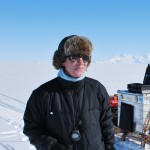 Guðfinna Th Aðalgeirsdóttir
Guðfinna Th Aðalgeirsdóttir
Professor, Faculty of Earth Sciences
gua@hi.is
Research Focus: Glaciology, Response of glaciers to climate change and coupling of climate and icesheet models.
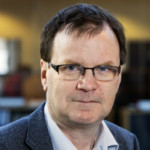 Guðmundur Hálfdánarson
Guðmundur Hálfdánarson
Professor in History, Faculty of History and Philosophy
ghalfd@hi.is
Research Focus: Early-Modern European history, Icelandic social history, Social history, history of political ideas, history of nationalism
 Guðrún Marteinsdóttir
Guðrún Marteinsdóttir
Professor in Fisheries Sciences, Faculty of Life and Environmental Sciences
runam@hi.is
Research Focus: Climate change and its effects on hydrodynamic variation and the marine environment; Reproduction, recruitment, life history variation, dynamics and structure of Fish populations
MARICE is an international research group within University of Iceland that is lead by Professor Guðrún Marteinsdóttir. Main focus is on environmental and hydrodynamic variability in the North Atlantic and its effects on ecosystems and the dynamics and behaviour of marine species. Ongoing projects include: the construction of Hydrodynamic Information Systems providing 7 days forecasts on ocean physics; Construction of a data operational three dimensional world of ocean physics and the ecosphere, including primary and secondary production and behaviour of pelagic fish stocks; data simmulated hindcasts of ocean physics back to 1948; validation of model runs with satellite information and integration into the 3D ocean model; ways to understand and predict the behaviour (migration) of mackerel and herring in the North Atlantic for fisheries forecasting and management; evaluate the impact of invading species such as the mackerel on the existing ecosystem; the influence of freshwater runoff on spawning and offspring survival of major fish species; interaction between cod spawning behaviour and lunar cycles; development of an otolith key to discriminate among cod ecomorphs; parasitic fauna of deep-sea and oceanic redfish (Sebastes mentella); drivers behind the stock recruitment relationships in capelin; krill ecological processes around Iceland in relation with environmental variables, with a view to understanding potential impacts of the recent climate warming. Research outputs have initiated the registration of a start-up company, Marsýn ehf. Also the research is currently a part of the NORMER the Nordic Centre for Research on Marine Ecosystems and Resources under Climate Change and SEAMAN a SeasEra project (fp7) on partially resolved Ecosystem models and their Application to Marine Management.
Gunnar Þór Jóhannesson
Professor, Faculty of Life and Environmental Sciences
gtj@hi.is
Research Focus: Arctic Tourism, Societal Change.
My main subject of research has been tourism entrepreneurship, destination development and tourism policy and planning in Iceland. In my research I have focussed on the Arctic and sub-Arctic regions and been active in enhancing the connections between the University of Iceland to that field, for instance in the context of the University of the Arctic.
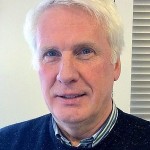 Gunnlaugur Björnsson
Gunnlaugur Björnsson
Research Scientist, The Science Institute
gulli@hi.is
Research Focus: high energy astrophysics, accretion onto black holes, gamma-ray bursts, cosmology
 Helgi Gunnlaugsson
Helgi Gunnlaugsson
Professor of Sociology, Faculty of Social and Human Sciences
helgigun@hi.is
Research Focus: Criminology, penal policy, local crime trends
Gunnlaugsson’s main research interests include criminology, penal policy, crime and punishment in small Arctic nations, and the problem of drugs and alcohol in society.
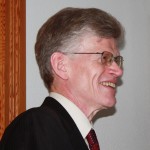 Helgi Skúli Kjartansson
Helgi Skúli Kjartansson
Professor of History, School of Education
helgisk@hi.is
Research Focus: Icelandic cod, changes in fishing grounds and fishing season
I am, in collaboration with others, working on the various types of evidence suggesting that prior to the “little ice age” cod fishing in Icelandic had a seasonal and geographical pattern very different from that of early modern and modern times. For whatever reason, perhaps partly because in a warmer ocean the cod used different breeding grounds or hunted some of its pray further north. To develop the idea, historical evidence must be collated with biological, archeological and paleoclimatic results, such as the prominence of fish in the medieval diet of North and East Iceland and suggestions of Icelandic cod experiencing a population bottleneck in the 15th or 16th century.
Jón Einar Jónsson
Scientist and Director, UI’s Research Centre at Snæfellsnes
joneinar@hi.is
Research Focus: Populations, climate change, indicator species, common eider
The overall theme is to tackle pressing questions about the ecology and behaviour of an ecologically important species within the Arctic, which also has been identified as a key indicator of climate change by CAFF. Iceland provides 70% of the world-wide eiderdown production. Our program collaborates with eiderdown collectors and exchanged knowledge. Eider farmers are a rich source of local ecological knowledge. We used nest counts from eider farmers to analyse effects of climate change on nest numbers. We have done fieldwork in many eider farms in Breiðafjörður, notably Rif, Hvallátur and the islands surrounding Stykkishólmur. A long-term banding project on breeding common eiders (hereafter eider; Somateria mollissima), in Breiðafjörður, West Iceland began in 2015. This project is collaboration with local eiderdown farmers, some of which participate in the banding effort. Objectives are to quantify individual variation in nest site selection, faithfulness to nest site and islands, phenotypic variation, and to evaluate interrelationships of these parameters. The project includes 7 nesting islands, which vary in landscape, and avian/mammalian predator presence/absence. Breiðafjörður and its islands probably represent a highly variable environment for nesting common eiders, especially given the variable weather among breeding seasons and the associated effects on vegetation and breeding phenology.
Participates in Arctic Research and Studies Program, with partners from NINA and NIBIO, Norway 2016-2017, and Nordic Waterfowl and Climate Network 2010-2014.
 Kristinn Schram
Kristinn Schram
Assistant Professor in Folklore and Museum Studies, Faculty of Social and Human Sciences
khschram@hi.is
Research Focus: Identity and mobility in the Arctic
My research focuses on mobile people and contested constructions of the North in relation to national, cultural and gendered identities and transnational interaction. I have also conducted and coordinated research, publications, events and networks with the Centre for Arctic Policy Studies, looking at the relationship between policy, society and culture in the Arctic.
 Ingibjörg Jónsdóttir
Ingibjörg Jónsdóttir
Associate Professor in Geography, Faculty of Earth Sciences
ij@hi.is
Research Focus: Sea-ice variability in Arctic and Sub-Arctic Regions
 Ingibjörg Svala Jónsdóttir
Ingibjörg Svala Jónsdóttir
Professor, Faculty of Life and Environmental Sciences
isj@hi.is
Research Focus: Plant ecology in the Arctic, biodiversity, effects of climate change, effects of land use, plant-animal interaction
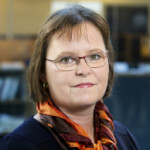 Lára Jóhannsdóttir
Lára Jóhannsdóttir
Associate Professor in Environment and Natural Resources, Faculty of Business Administration
laraj@hi.is
Research Focus: Insurance in the High North, Environmental Management
Lara’s research focus is primarily on the finance sector, corporate social responsibility, sustainability and climate change. Lara has published numerous peer-reviewed articles in international journals, and written chapters in edited academic books.
Marianne Helene Rasmussen
Scientist and Director, UI’s Research Centre in Húsavík
mhr@hi.is
Research Focus: Marine mammals, mostly cetaceans (whales, dolphins and porpoises). Animal behaviour, their communication, hearing or echolocation.
Marianne is a team member of the Nordic Centre of Excellence ARCPATH, which is part of the Joint Nordic Initiative on Arctic Research. This was established in order to generate new insights into both the challenges and opportunities confronting the Arctic region.
 Margét Cela
Margét Cela
Project Manager, Centre for Arctic Studies and PhD student, University of Lapland
mcela@hi.is
Research Focus: Safety and Security, Politics, Small States, West Nordic Region, Sustainability and Societies in the Arctic.
PhD student at the University of Lapland in Finland. The topic for the thesis is Iceland’s security interests in the High North and Arctic. A broad definition of security is applied and a special focus placed on military-, political-, environmental- and human/societal security, related to the developments in the region. SWOT analysis is conducted to identify the strengths, weaknesses, opportunities and threats of Iceland in the Arctic security context. This is a qualitative research, based on interviews with experts, both in Iceland and elsewhere . The research field is broader than this particular research indicates, as it is hard to explore Iceland’s position and interests in the Arctic without considering other factors, such as politics, business, cooperation, globalization, energy issues, climate change, sustainability, growing international interest in the region, and Iceland’s position as a small state. Coordinator of the West Nordic Studies, member of the U-Arctic – Northern Research Forum network on geopolitics and security.
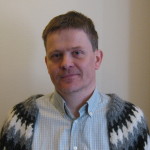 Snæbjörn Pálsson
Snæbjörn Pálsson
Professor in Population Biology, Faculty of Life and Environmental Sciences
snaebj@hi.is
Research Focus: diversity, phylogeography, genetics, colonization, dispersal.
The biota of the Arctic has been shaped by climatic fluctutations. Various adaptations to cold climate are well known but their genetic diversity reflects also their natural history. During the cold periods of Ice Age, large region of the Arctic region was covered by ice and was uninhabitable for organism and current Arctic species survived at more southern regions, even in allopatric refugia where they diverged genetically over long periods and evolved into subspecies or even new species. During the retreat of the ice cap, these populations expanded their range and colonized the Arctic. In populations with limited dispersal, sharp boundaries or hybrid zones between populations originating from different refugia can be observed. The high variation often observed among the Arctic populations could though also have been driven by rapid evolution after the last glacial period, where natural selection, colonization and random genetic changes. I have studied these processes by analysing geographic patterns in genetic and morphological variation in various Arctic species, both on land and sea, e.g. variation and hybridization of Glaucous gull, Purple sandpiper, Arctic cod and Polar cod, the caddisfly Apatania zonella and groundwater amphipods which survived Ice Age in Iceland. Participated in an international project (TUNU-MAFIG) on the marine biota in NE-Greenland (2002-2005).
 Sumarliði Ísleifsson
Sumarliði Ísleifsson
Assistant Professor, Faculty of History and Philosophy
sumarlidi@hi.is
Research Focus: Images, the North, islands, nationalism, racism, modernity.
On the research project “Images of Iceland and Greenland in the 19th and 20th Centuries”. The far north is becoming ever more prominent in international discourse. Iceland has also directed its gaze northwards, and topics pertaining to the far north are increasingly among the key issues in public debate in and outside these countries: climate change, navigation, and access to natural resources rather than culture, history, and their relationship to the outside world. The relations between Iceland and Greenland are rapidly expanding. A prerequisite for these nations to benefit from their increasing relations is to understand how they were viewed in the past: to examine the dominant perspectives on these countries, as well as the perceptions Icelanders and Greenlanders have had of one another and how their images of each other have influenced domestic self-images. It is thus the focus of this study to investigate images of Iceland and Greenland in the period 1850–2010. It is assumed that these images are constructions in which ideas about modernity, nationalism, colonialism, and racism as well as ideas about dystopia and utopia, islands, and the North have been influential. Such is the origin of borealism, the discourse on the far north; cf. Edward Said’s conception of orientalism. It is taken into account that many images of these countries are “active”, but the study focuses primarily on dominant perceptions, though other less prominent images will also be discussed. In addition, reactions to external images—domestic responses to foreign accounts of country and nation in text and image—will be studied, with a focus on the dialectical “conversation” that occurs: how external perception and comparison with others becomes an important factor in public discourse and how they influence nation-building and the development of self-images. The research is based on the Isleifsson’s doctoral dissertation on external images of Iceland and Greenland, Islands on the Edge, Images of Iceland and Greenland from the Middle Ages to the Mid 19th Century; the PhD thesis was defended at the University of Iceland in June 2014.
Sumarliði R. Ísleifsson is a participant in Denmark and the New North Atlantic, from 2013 to 2016, where Danish, Faroese, Greenlandic, Norwegian, German and Icelandic scholars focus on internal and external images of Iceland, Greenland and the Faroe Islands in the present regarding the historical development of these ideas and their relations to Denmark. Ísleifsson is also a participant in the Network for Cultural Heritage, Memory, Digital Humanities and Visualization in the North Atlantic (2014–2017). The project is led by Dr. Kim Simonsen (Faroe Islands) at the University of Amsterdam, and participants are from Iceland, Greenland, Faroe Islands, Denmark, Scotland and the Netherlands. The applicant is a member of the project directory with among others Dr. Joep Leerssen (Amsterdam University).
Unnur Birna Karlsdóttir
Historian & Research Specialist, University of Iceland’s Research Centre in East Iceland
unnurk@hi.is
Research Focus: Environmental history, views on nature and hydro-power projects, history of ideas on nature protection and environmentalism, the relationship of humans and reindeer in Iceland, the Icelandic central highland, nature and tourism
Currently working on the history of reindeer in Iceland. Earlier research included the history of eugenics and Nordic racism in Iceland, the history of sterilisation policy in Iceland, Icelandic women’s political movements and Icelandic abortion policy. Participated in NEHN (Nordic Environmental History Network) 2009-2012.
 Valur Ingimundarson
Valur Ingimundarson
Professor of History, Faculty of History and Philosophy
vi@hi.is
Research Focus: Geopolitics, security, governance, Icelandic foreign and security policy, the Arctic Council.
My Arctic research focuses on three themes: (1) Arctic governance, politics, and security; (2) the role of the Arctic in Iceland‘s foreign and security policy; 3) civil preparedness in the Arctic. (1) The research deals with the political manifestations of power constellations in Arctic governance and security and with the legal and geopolitical ramifications of Arctic decision-making processes. It stresses several interlinked themes: (a) institutional developments; (b) state-to-state relations; (c) coalition-building; (d) internationalization; (e) geopolitics. (2) The focus is on how Iceland’s Arctic strategy has been framed, developed, and enacted from the post-Cold War period to the present. By stressing the multifunctionality of the Arctic as a concept and spatial entity, the research highlights which Arctic issues have been “appropriated” and integrated into Icelandic official narratives. The question is how the Arctic has been employed both to reinforce traditional Iceland’s Western foreign policy orientation (U.S.-Icelandic defense relations, NATO, Nordic cooperation, etc) as well as to explore new non-Western and Asian possibilities (China). The purpose is to put these Arctic narratives—their meanings, interactions, and projections—within the context of Icelandic domestic and foreign policies. (3) The research project is on civil maritime preparedness systems in the Arctic region, covering Greenland, Iceland, Norway and Northern Russia. A special focus is on Iceland and on the assessment of threat factors and methods to respond to risks, involving search and rescue (SAR),oil spill recovery, fire fighting and salvage, and transnational illegal activities.
International participation: MARPART (Maritime Preparedness and International Partnership in the High North/University of Bodø) is an international research project designed to develop knowledge on future maritime activity level in the Arctic region—covering Greenland, Iceland, Norway, and Russia—on the risk factors. The purpose is to increase understanding of future tasks and the demands for the preparedness system; to provide analytical concepts for coordination in cross-border, emergency task force operations; to use organizational concepts to enhance inter-organizational partnerships, management of joint, cross-border operations and to create competence networks. China-Nordic Arctic Research Center (CNARC) is a platform for academic cooperation between academic institutions and scholars to increase awareness, understanding and knowledge of the Arctic within a regional and global framework. CNARC’s research themes include: Arctic climate change and its impact; Arctic resources, shipping and economic cooperation; and Arctic policy-making and law. EDDA – Center of Excellence at the University of Iceland. The research focuses on the politics, cultures, and sociologies of the Arctic and the multiple transnational effects of climate change. One goal is to “define” the “North” in terms of geopolitics, social development, “cultural heritage,” tourism, gender, security, sovereignty, intergovernmentalism, regionalism, and economy. This includes an analysis of the role of regional institutions and international agreements and factors such as human development, the rights of “indigenous people,” and social, economic, and cultural sustainability.
 Þorvaldur Þórðarson
Þorvaldur Þórðarson
Professor in Volcanology and Petrology, Faculty of Earth Sciences and Institute of Earth Sciences
torvth@hi.is
Research Focus: Hot Spot Volcanology, Volcano-Climate interactions, Applied Volcanology and its application in mineral exploration.
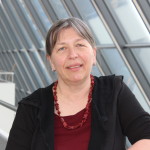 Þóra Ellen Þórhallsdóttir
Þóra Ellen Þórhallsdóttir
Professor, Faculty of Life and Environmental Sciences
theth@hi.is
Research Focus: Plant Ecology, flowering phenology and proglacial environments
 Þröstur Þorsteinsson
Þröstur Þorsteinsson
Professor in Environment and Natural Resources, Faculty of Earth Sciences
ThrosturTh@hi.is
Research Focus: Glaciers, climate change, air pollution, environmental change.
Air pollution, for instance particulate matter, is carried in over the glaciers and snow covered areas in the Arctic. Once deposited, it can affect the melting by changing the amount of radiation reflected from the surface, by lowering the surface albedo. Dust storms contribute to the air pollution in the Arctic, especially in Iceland. The source areas will change as the glaciers retreat and glacier rivers change, as well as other changes, in for instance vegetation cover, due to climate change.
CRAICC – Cryosphere-atmosphere interactions in a changing Arctic climate – is part of the Top-level Research Initiative (TRI), the largest joint Nordic research and innovation initiative to date, aiming to strengthen research and innovation regarding climate change issues in the Nordic Region.
ADHIW – Understanding the Link between Air Pollution and Distribution of Related Health Impacts and Welfare in the Nordic Countries – The impacts from air pollution are not equally distributed, but depend on socio-demograhic and socio-economic factors, including age, gender, social status, education level, ethnic group, living conditions and life style. The overall aim of the project is to further understand the link between air pollution levels and chemical composition and to investigate and assess the effects of air pollution on the distribution of related health impacts, socio-economics and welfare in the Nordic countries (Denmark, Sweden, Norway, Finland and Iceland).
